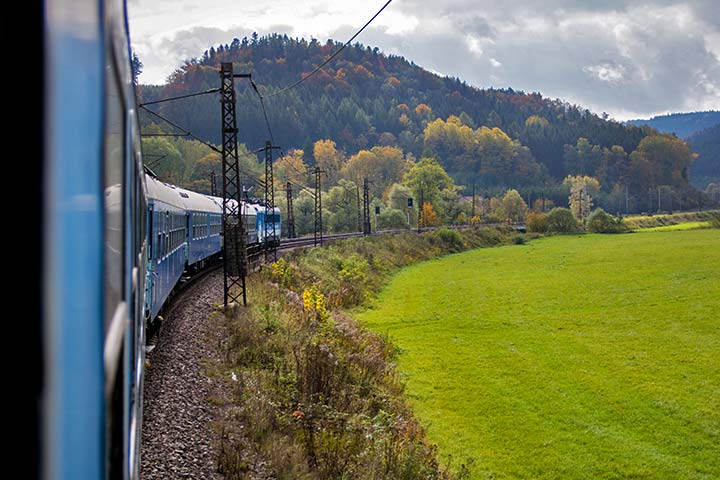


Chess News


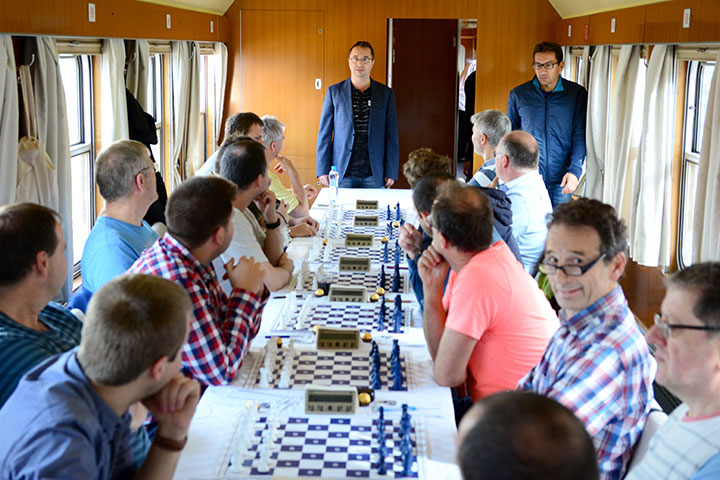
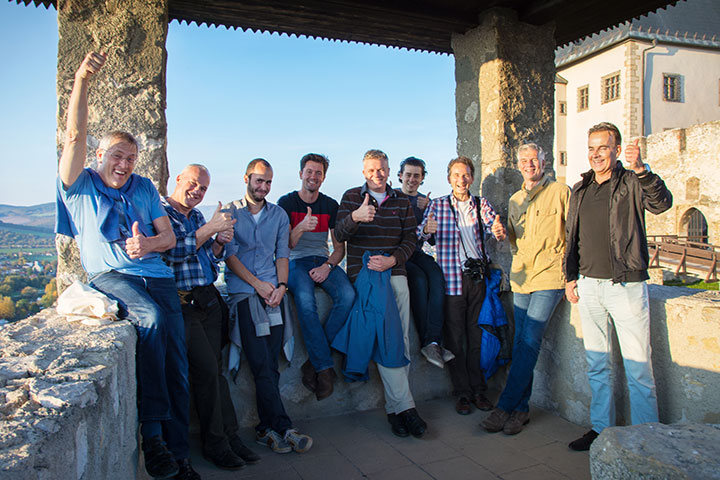
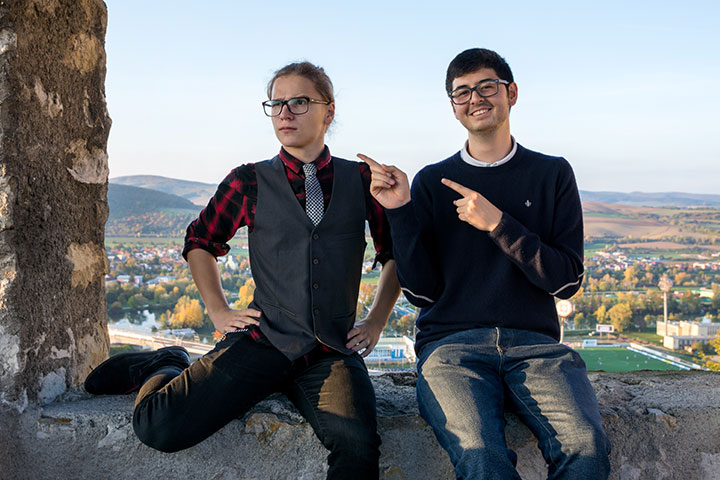


Winning starts with what you know
The new version 18 offers completely new possibilities for chess training and analysis: playing style analysis, search for strategic themes, access to 6 billion Lichess games, player preparation by matching Lichess games, download Chess.com games with built-in API, built-in cloud engine and much more.
If chess at sea is not your cup of tea, perhaps entertain the idea of chess on a train! The route is new every year, and the novelty doesn't seem to wear off. The train is organized by Pavel Matocha and the Prague Chess Society in partnership with Czech Railways.
Eightly players climbed aboard the 2017 edition of the Prague "Chess Train" which travelled from the Czech capital to Olomouc, then to Slovakian cities of Trencin, Bratislava, and back via Lednice to Prague.
The roughly 700 kilometer route is not the longest the tournament has attempted, but that just leaves more time for sightseeing at each day's destination. On the way, nine rounds of rapid chess (20 minutes plus 10 seconds increment per move) were played as the train transited between stops.
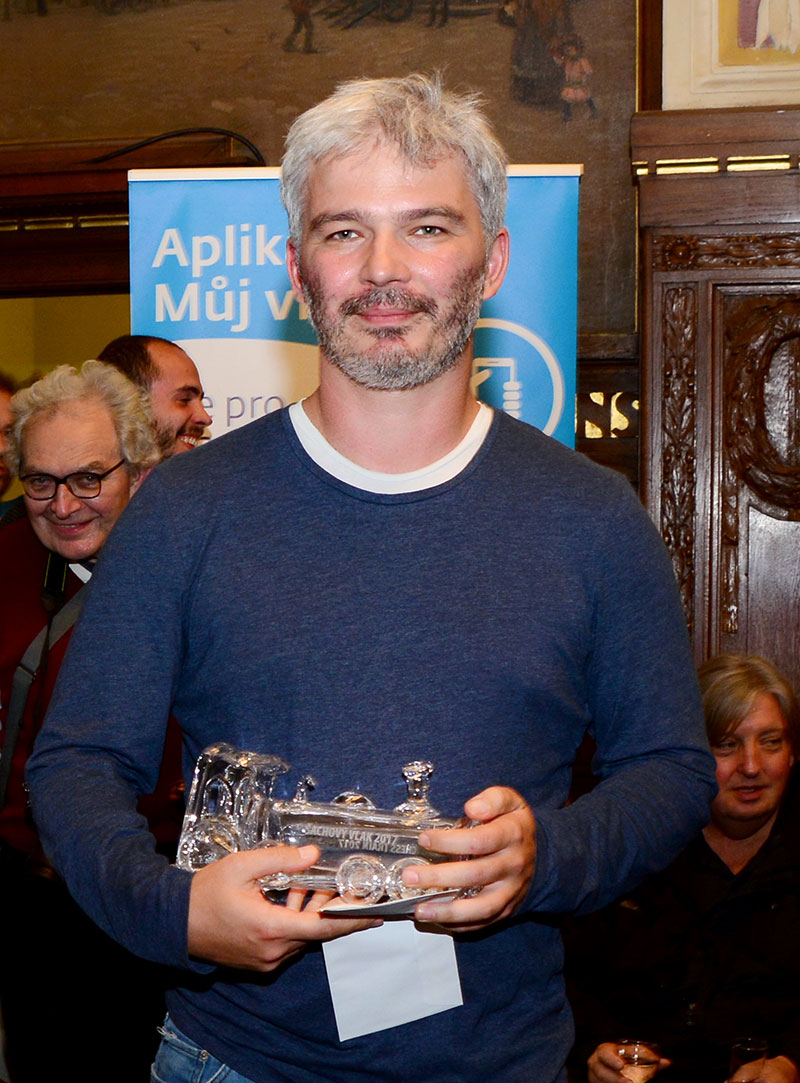 The Chess Train is a way to exercise both a passion for chess and travel. The chess is played in a relaxed enviroment with low stakes, and plenty of time to enjoy the ride. At the end of each day, players get to explore a new city, in groups or individually, before retiring to a comfortable hotel. When done right, it's an enjoyable five days of good food, good friends, and good chess.
The Chess Train is a way to exercise both a passion for chess and travel. The chess is played in a relaxed enviroment with low stakes, and plenty of time to enjoy the ride. At the end of each day, players get to explore a new city, in groups or individually, before retiring to a comfortable hotel. When done right, it's an enjoyable five days of good food, good friends, and good chess.
Past events have included grandmasters, but this year the top seed was IM Roman Khaetsky [at right], from Ukraine. He duly won the clear first with 7½ / 9, a prize of 15,000 Czech kroner (about €585 euro) and a glass locomotive trophy.
The prize ceremony itself is unique, as aside from the top five places, and three rating awards — all small cash prizes — there is a grab bag of additional prizes ranging from hotel vouchers to books and DVDs (including some from ChessBase), to an outdoor LED sports head lamp, a pair of gognac glassic with a train theme, Czech music CDs, and a mishmash of others — all of which are distributed to players roughly in order of standing. No one goes home empty handed.
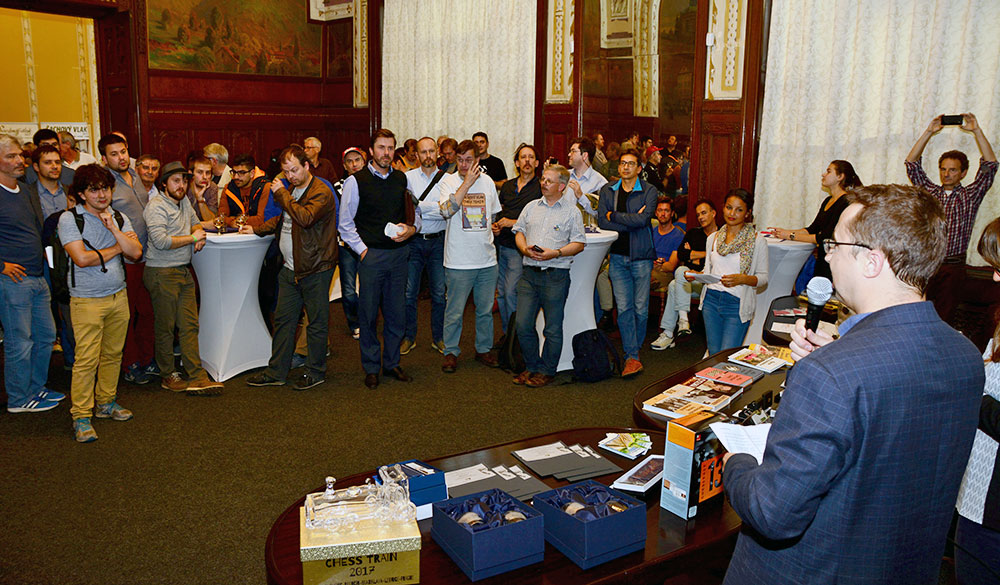
Safely back in Prague, organiser Pavel Matocha announces the winners | Photo: Anezka Kruzikova
Here's a game from the winner:
The Maroczy System of the Sicilian Defence is one of the modern openings where Black attacks the white centre mainly with pieces. After the moves 1.e4 c5 2.Nf3 Nc6 3.d4 cxd4 4.Nxd4 g6 5.c4 Nf6 the pawns c4 and e4 secure White a space advantage in the middle, however, it is exactly these central pillars which may easily become targets of the black counterattack. Sergei Tiviakov has been applying this system with Black in his tournament practice since 1991 and is considered one its greatest experts.
Each morning after breakfast, players board the train and start their first game of the day. The top boards are arranged in custom cars that have been emptied to allow for a long row of tables. You can literally watch the world flying by as you contemplate your moves. If you make it to these cars, it's a sign you're playing well.
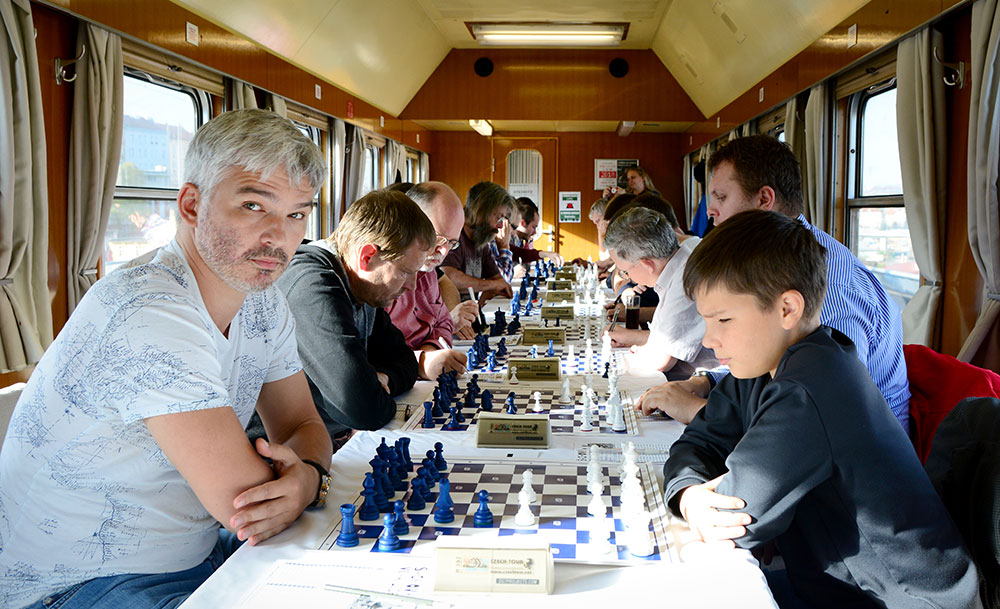
Roman Khaetsky and Oleksandr Vakulenko at the start of the game shown above | Photo: Anezka Kruzikova
The lower boards are housed in private first class compartments, which have the advantage of being closer to the restaurant and passenger cars.
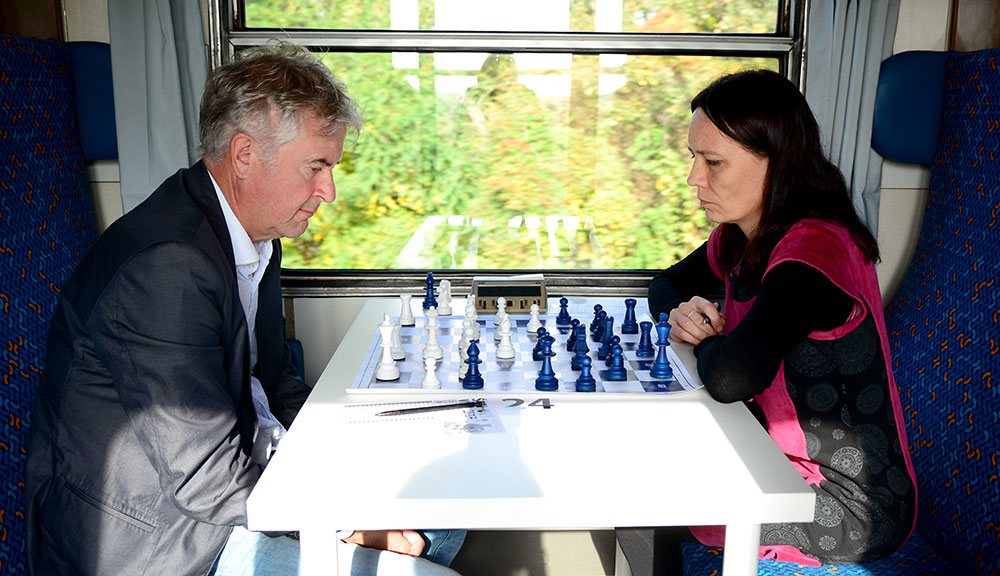
Quieter, but no less scenic: Robert van der Wal vs. Alice Maatov, in Round 1 | Photo: Anezka Kruzikov
A dozen masters took part, but the tournament caters to amateurs and club players of all levels. One 1837-rated player, Jon Loman, was awarded a special prize for the "most beautiful game" of the tournament, a 21-move miniature. He's Swedish but went for a Danish Gambit against his German opponent, and capped a king hunt with a flourish:
A Gambit Guide through the Open Game Vol.1 and 2
To avoid them or to play them, you have to know them. In two Volumes we see gambits such as Frankenstein-Dracula Gambit, the Cochrane Gambit, the Belgrade Gambit, the King's Gambit, Marshall Gambit, the Scotch Gambit, the Jänisch Gambit and many more.
The Chess Train was the subject of a 2016 short documentary by Estonian filmmaker Maris Flabba who rode the train in 2015 on an expansive route that travelled from the Czech Republic to Austria, Germany, Slovakia and Poland at a time when hundreds of thousands of Syrian refugees were fleeing to Europe.
2016 Chess Train documentary short film | Maris Salumets on YouTube
Photographer Anezka Kruzikova returned to Prague with treasure trove of photos, from which we've selected a few highlights (with more in the gallery above).
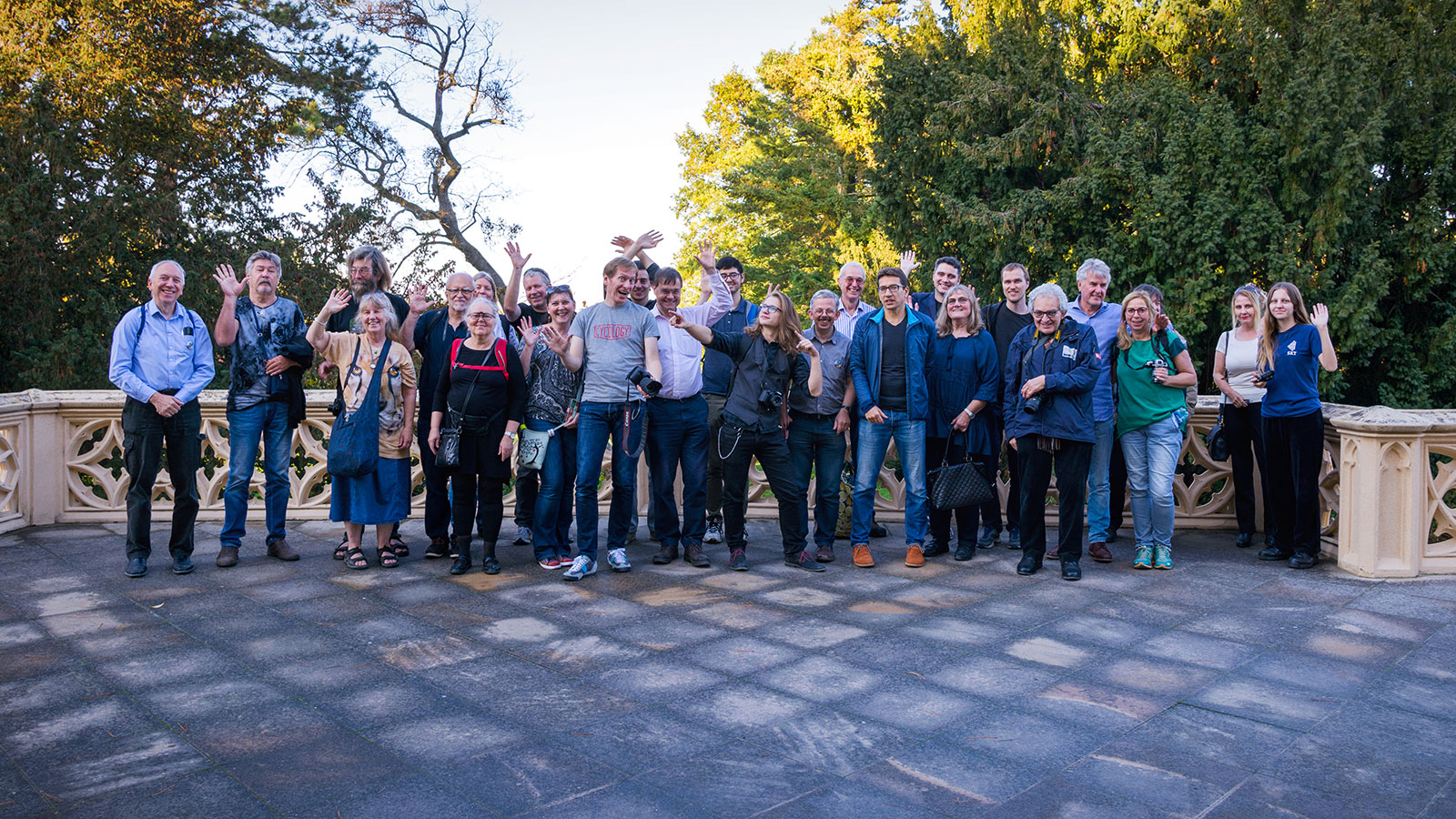
(Click or tap to expand) Players group photo | Photo: Anezka Kruzikova
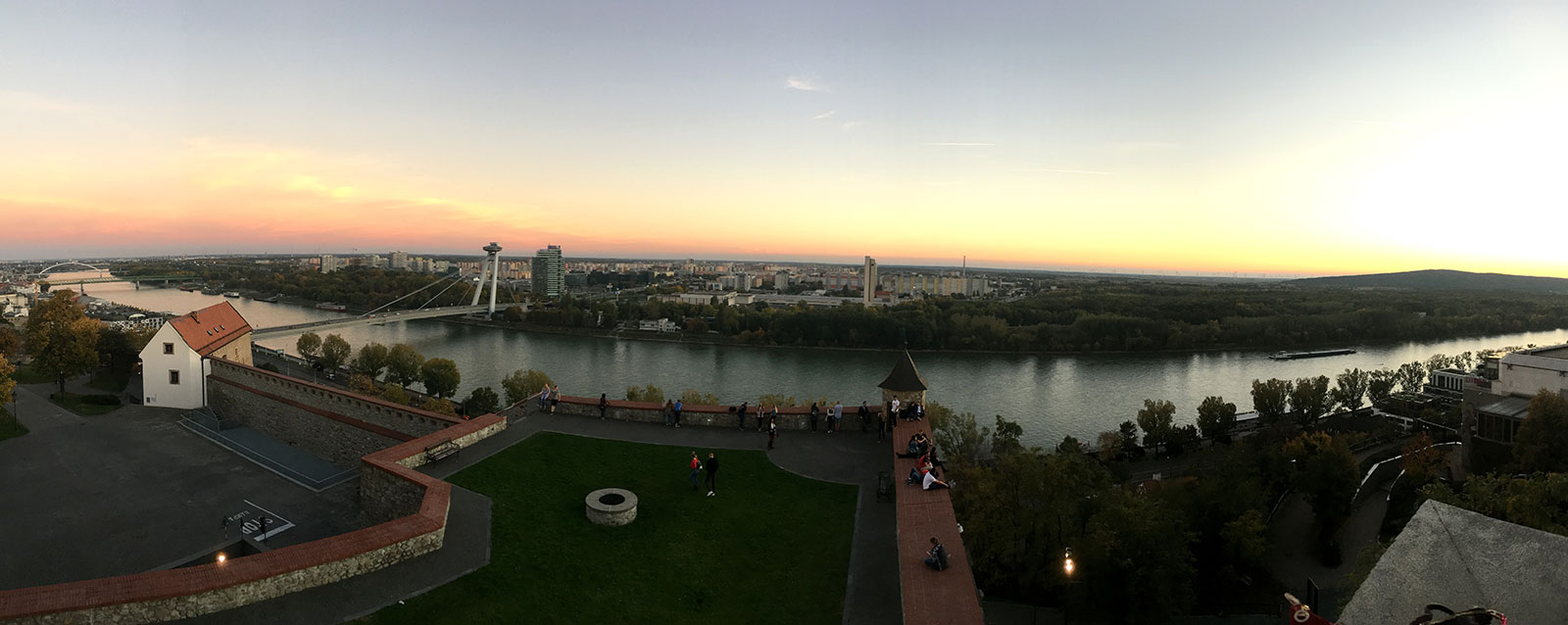
Bratislava panorama | Photo: Anezka Kruzikova
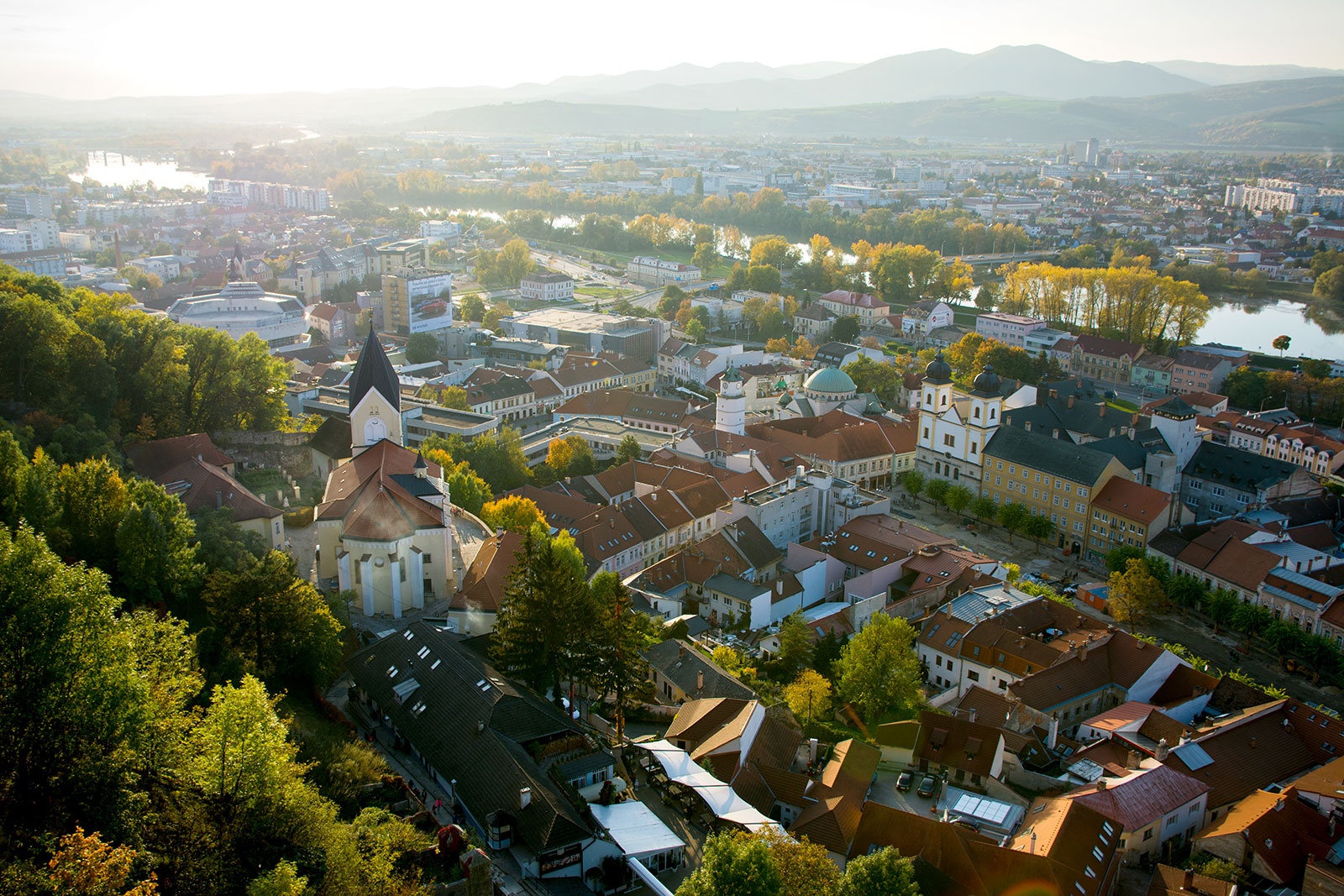
High above Trencin, Slovakia | Photo: Anezka Kruzikova
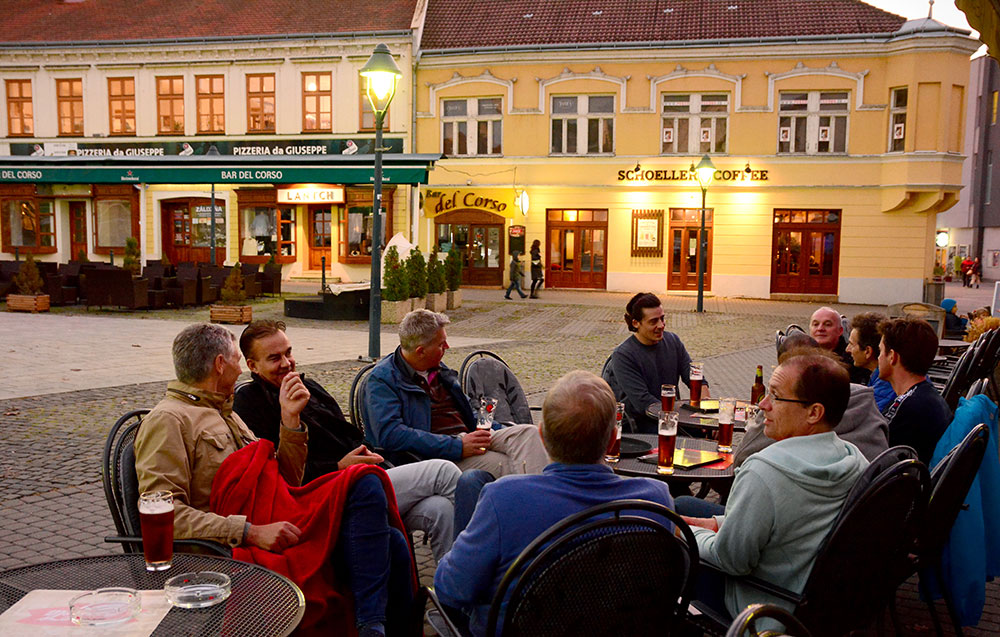
Relaxing after the second day | Photo: Anezka Kruzikova
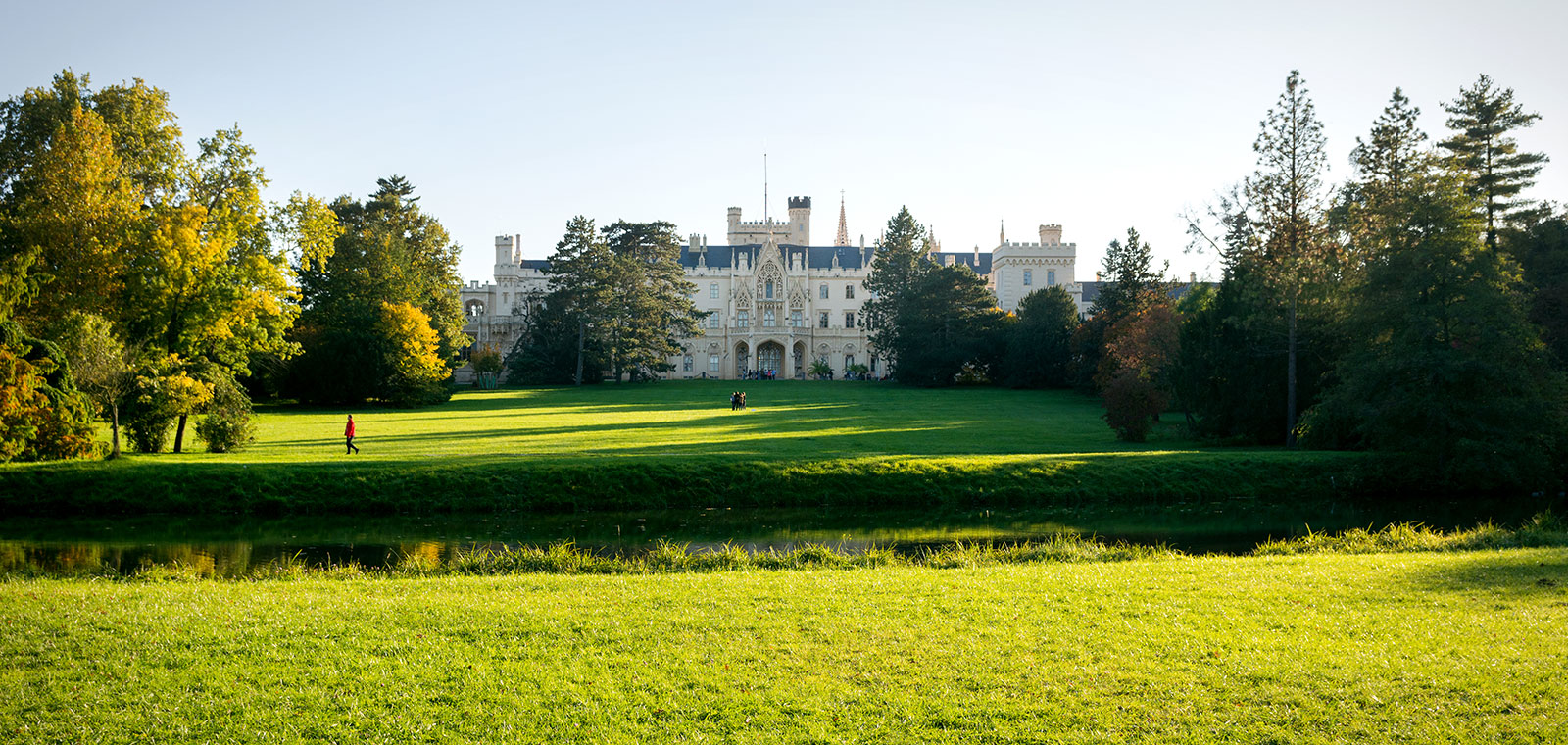
Lednice castle | Photo: Anezka Kruzikova
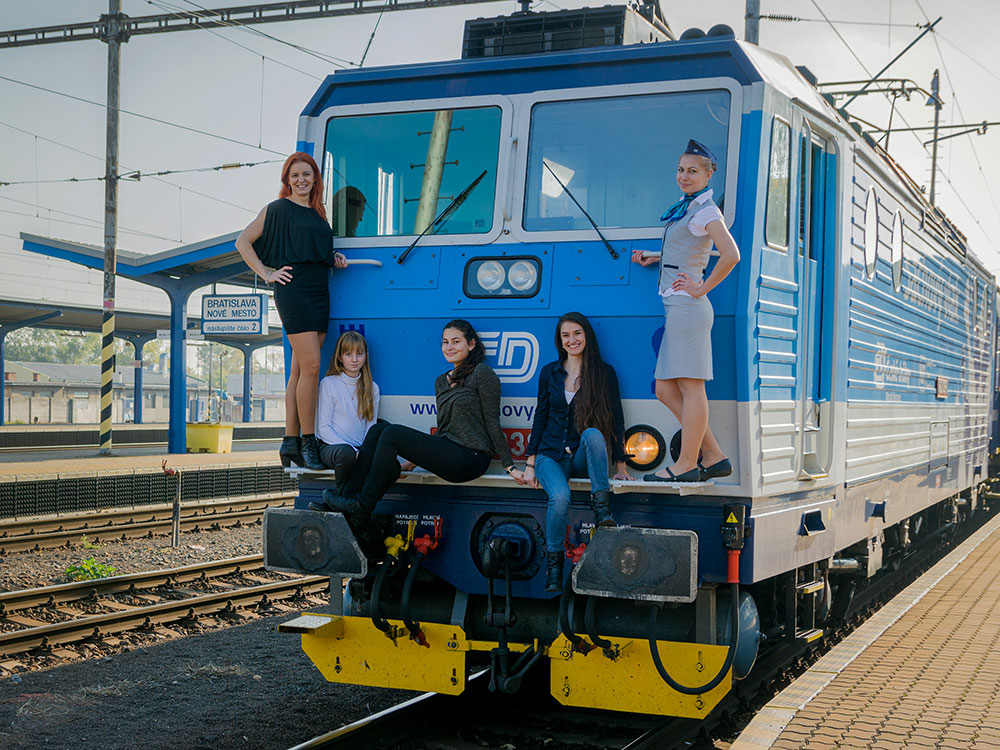
Tournament staff awaiting their guests | Photo: Anezka Kruzikova
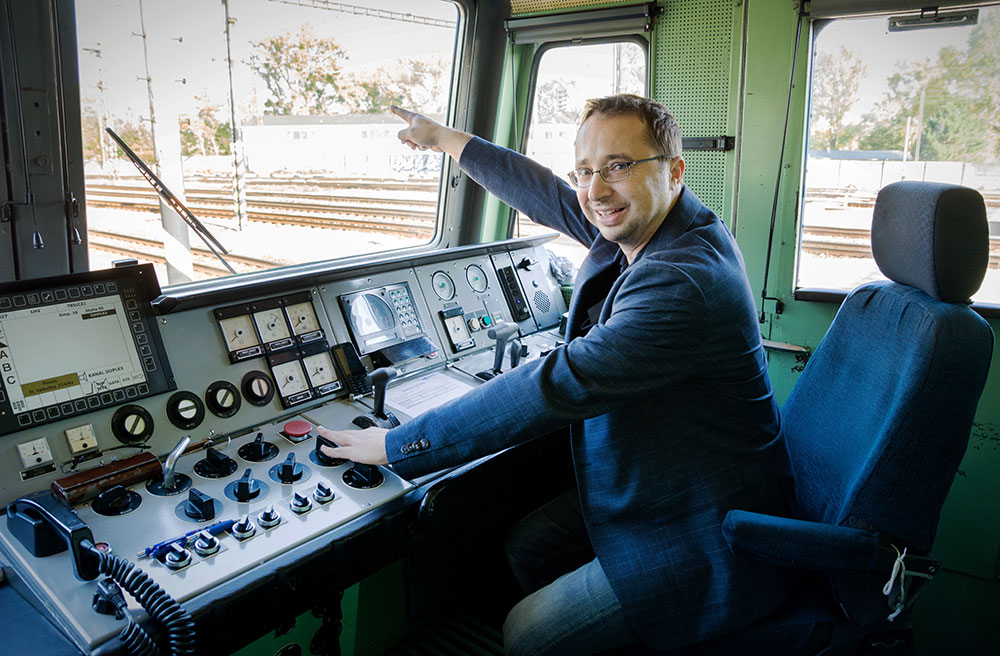
Pavel Matocha in the driver's seat — onward to 2018! | Photo: Anezka Kruzikova
Next year's Chess Train will take a Polish route: Prague — Ostrava — Warsaw — Krakow — Hradec Králové, October 12-16, 2018.
Correction: An earlier version of this story had an incorrect game score for the Loman vs. Mendow game.